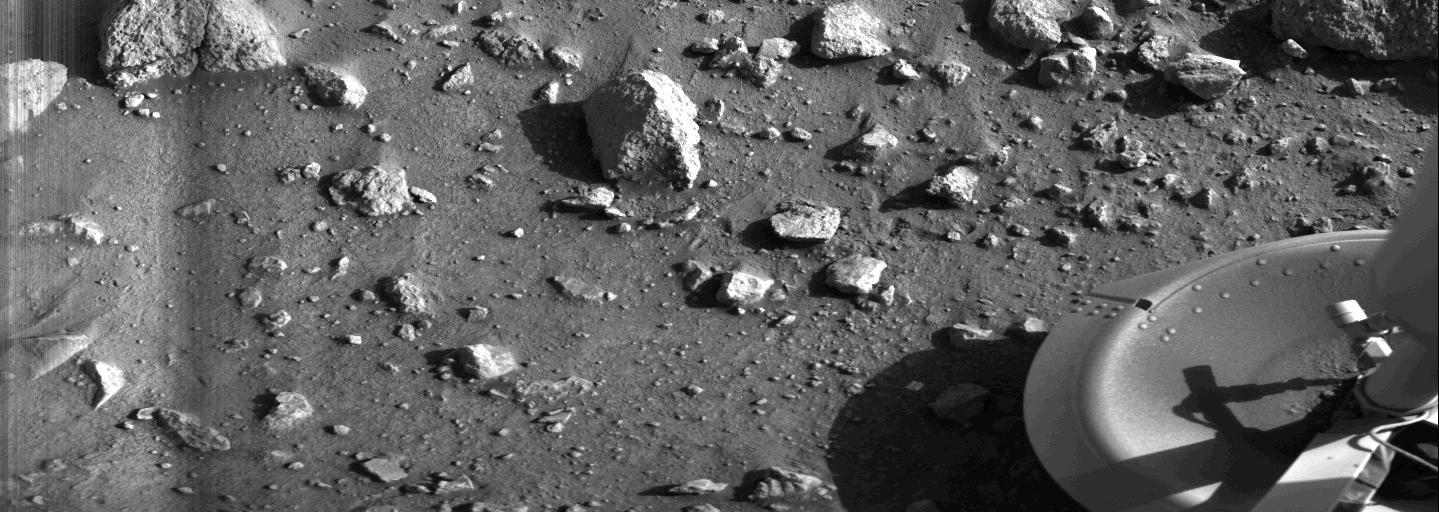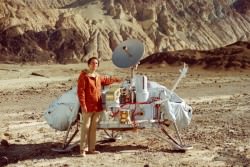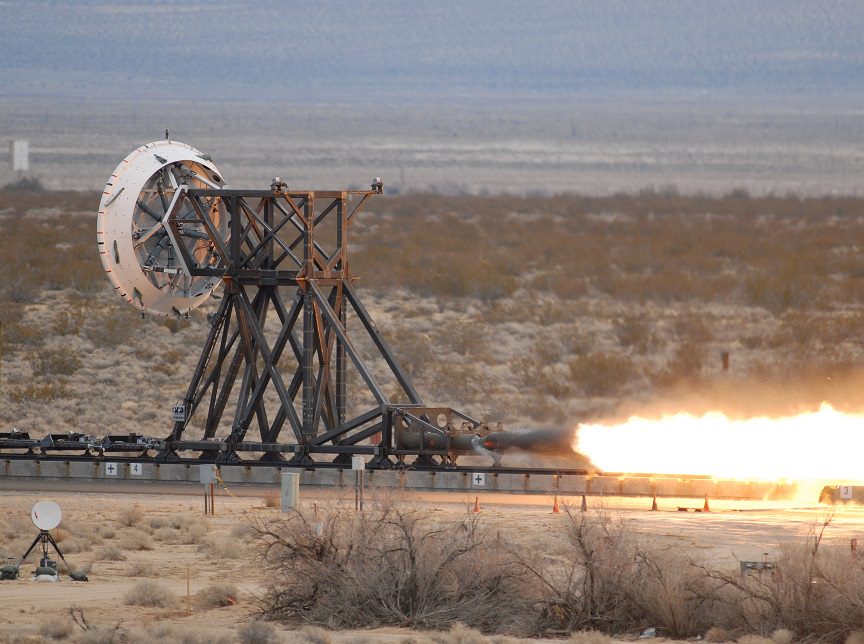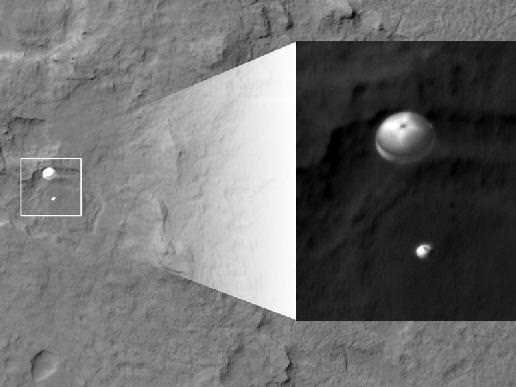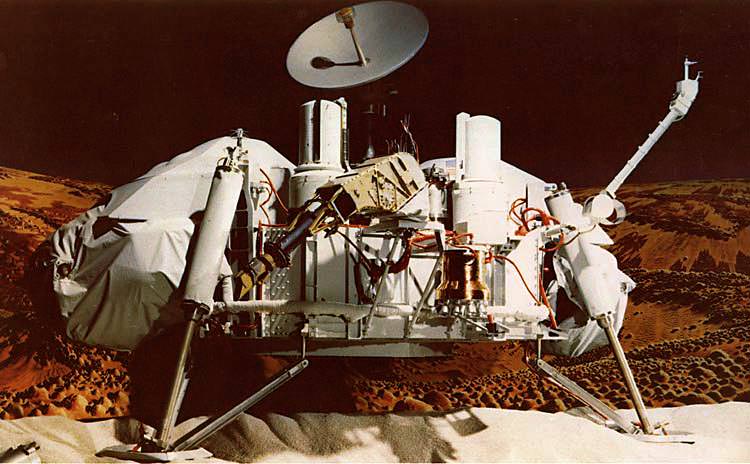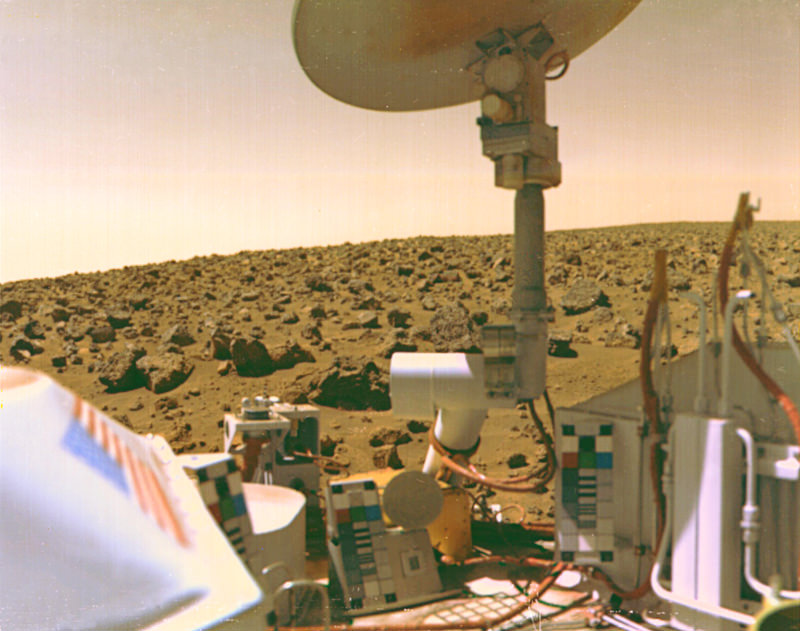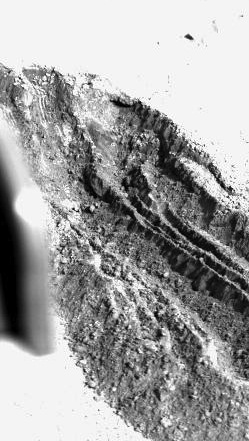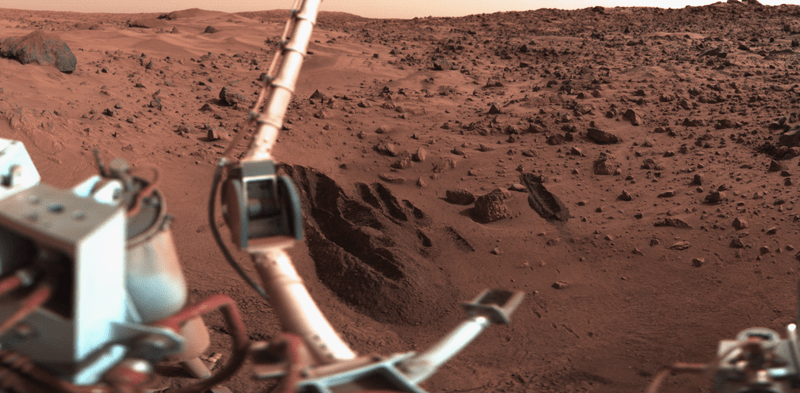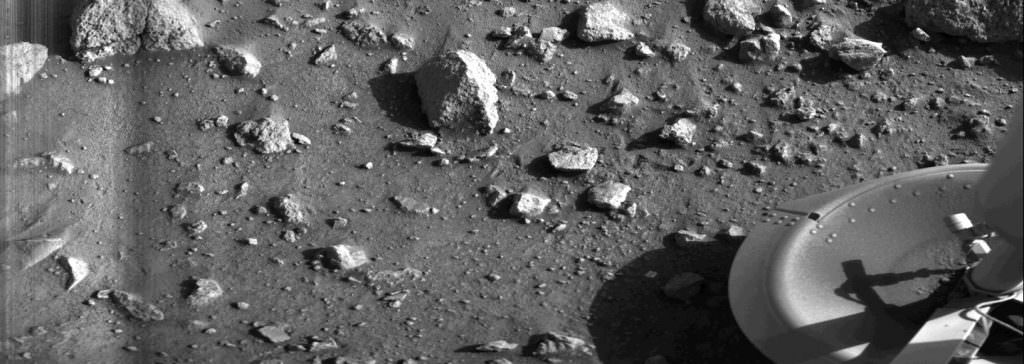
July 20. Sound like a familiar date? If you guessed that’s when we first set foot on the Moon 47 years ago, way to go! But it’s also the 40th anniversary of Viking 1 lander, the first American probe to successfully land on Mars.
The Russians got there first on December 2, 1971 when their Mars 3 probe touched down in the Mare Sirenum region. But transmissions stopped just 14.5 seconds later, only enough time for the crippled lander to send a partial and garbled photo that unfortunately showed no identifiable features.
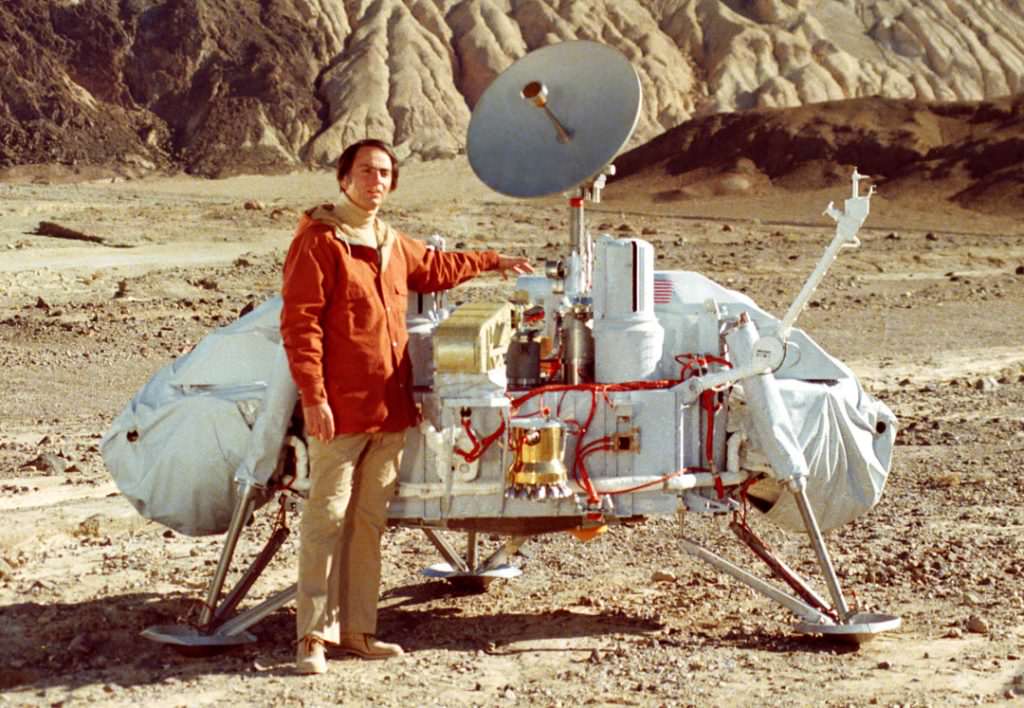
Viking 1 touched down on July 20, 1976 in Chryse Planitia, a smooth, circular plain in Mars’ northern equatorial region and operated for six years, far beyond the original 90 day mission. Its twin, Viking 2, landed about 4,000 miles (6,400 km) away in the vast northern plain called Utopia Planitia several weeks later on September 3. Both were packaged inside orbiters that took pictures of the landing sites before dispatching the probes.
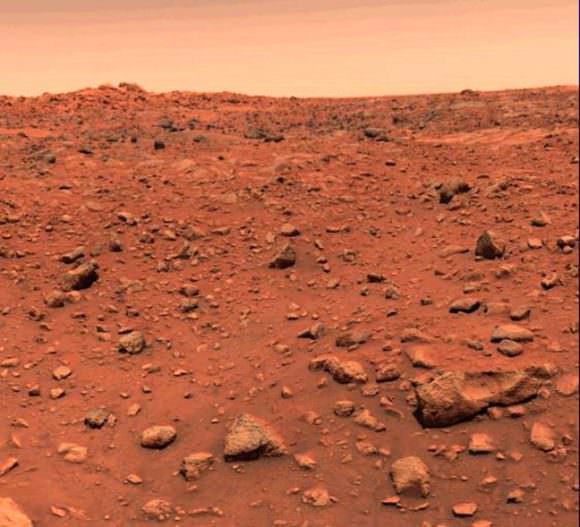
Viking 1 was originally slated to land on July 4th to commemorate the 200th year of the founding of the United States. Some of you may remember the bicentennial celebrations underway at the time. Earlier photos taken by Mariner 9 helped mission controllers pick what they thought was a safe landing site, but when the Viking 1 orbiter arrived and took a closer look, NASA deemed it too bouldery for a safe landing, so they delayed the the probe’s arrival until a safer site could be chosen. Hence the July 20th touchdown date.
My recollection at the time was that that particular date was picked to coincide with the first lunar landing.
I’ll never forget the first photo transmitted from the surface. I had started working at the News Gazette in Champaign, Ill. earlier that year in the photo department. On July 20 I joined the wire editor, a kindly. older gent named Raleigh, at the AP Photofax machine and watched the black and white image creep line-by-line from the machine. Still damp with ink, I lifted the sodden sheet into my hands, totally absorbed. Two things stood out: how incredibly sharp the picture was and ALL THOSE ROCKS! Mars looked so different from the Moon.
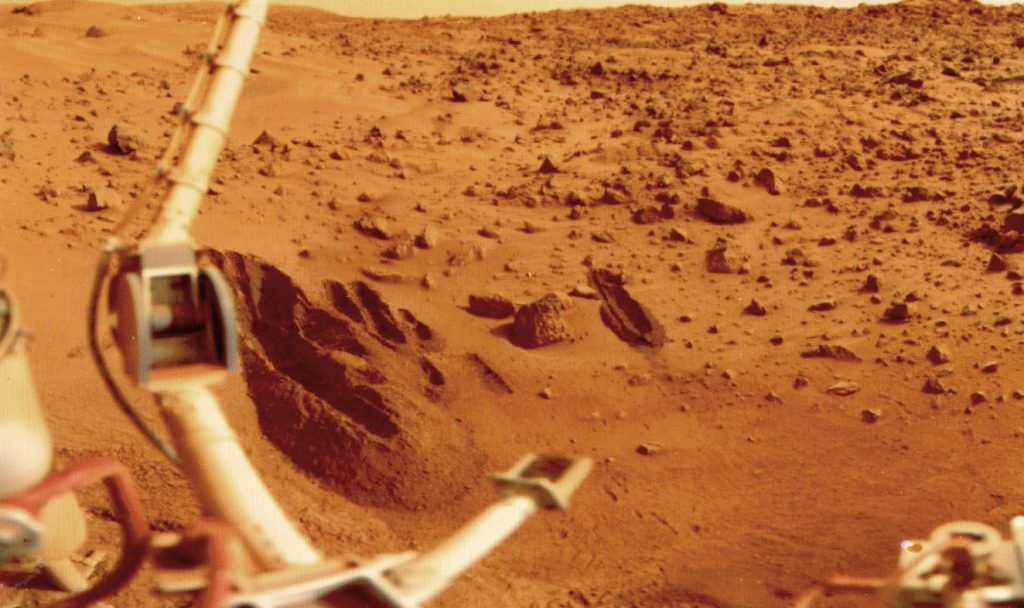
One day later, Viking 1 returned the first color photo from the surface and continued to operate, taking photos and doing science for 2,307 days until November 11, 1982, a record not broken until May 2010 by NASA’s Opportunity rover. It would have continued humming along for who knows how much longer were it not for a faulty command sent by mission control that resulted in a permanent loss of contact.

Viking 2 soldiered on until its batteries failed on April 11, 1980. Both landers characterized the Martian weather and radiation environment, scooped up soil samples and measured their elemental composition and send back lots of photos including the first Martian panoramas.
Each lander carried three instruments designed to look for chemical or biological signs of living or once-living organisms. Soil samples scooped up by the landers’ sample arms were delivered to three experiments in hopes of detecting organic compounds and gases either consumed or released by potential microbes when they were treated with nutrient solutions. The results from both landers were similar: neither suite of experiments found any organic (carbon-containing) compounds nor any definitive signs of Mars bugs.
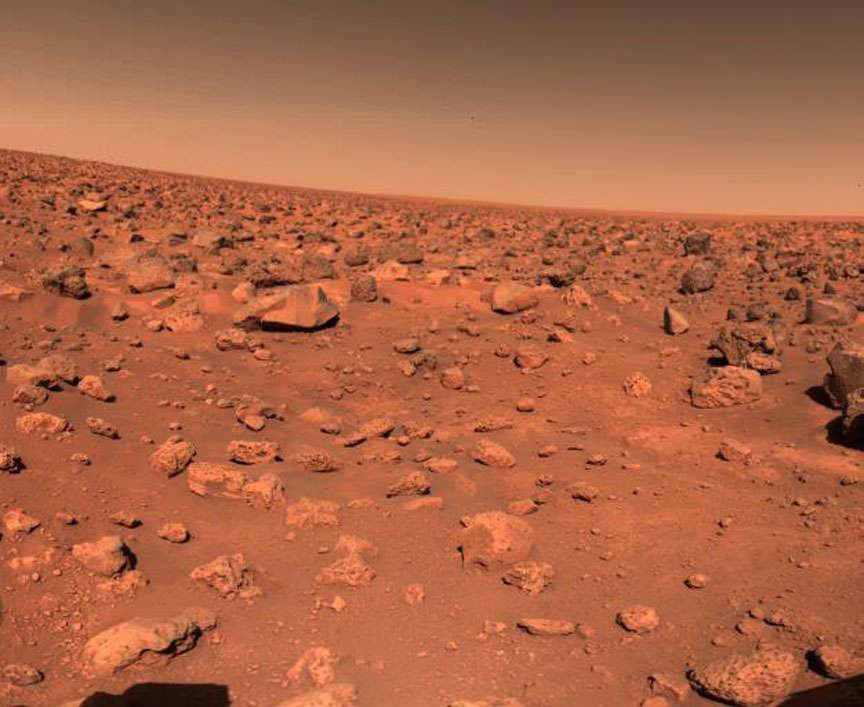
Not that there wasn’t some excitement. The Labeled Release experiment (LC) actually did give positive results. A nutrient solution was added to a sample of Martian soil. If it contained microbes, they would take in the nutrients and release gases. Great gobs of gas were quickly released! As if the putative Martian microbes only needed a jigger of NASA’s chicken soup to find their strength. But the complete absence of organics in the soil made scientists doubtful that life was the cause. Instead it was thought that some inorganic chemical reaction must be behind the release. Negative results from the other two experiments reinforced their pessimism.
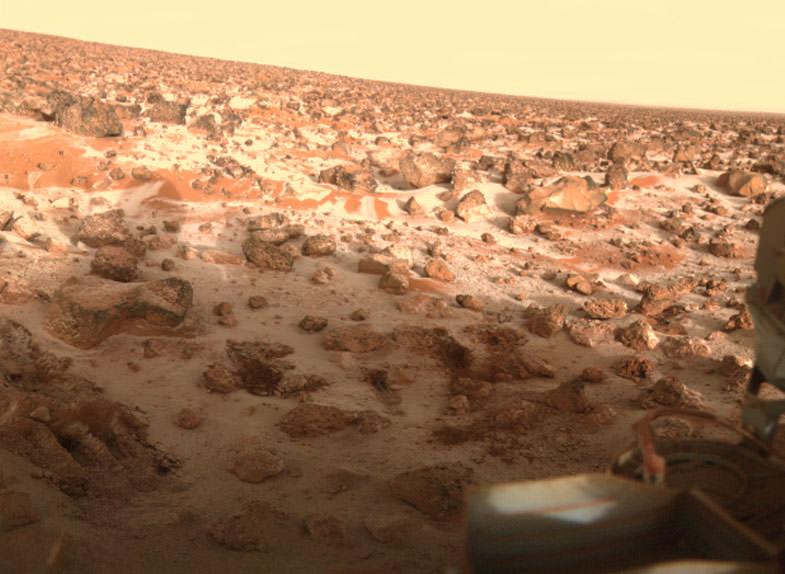
Fast forward to 2008 when the Phoenix lander detected strongly oxidizing perchlorates originating from the interaction of strong ultraviolet light from the Sun with soils on the planet’s surface. Since Mars lacks an ozone layer, perchlorates may not only be common but also responsible for destroying much of Mars’ erstwhile organic bounty. Other scientists have reexamined the Viking LC data in recent years and concluded just the opposite, that the gas release points to life.
A fun, “period” movie about the Viking Mission to Mars
Seems to me it’s high time we should send a new suite of experiments designed to find life. Then again, maybe we won’t have to. The Mars 202o Mission will cache Martian rocks for later pickup, so we can bring pieces of Mars back to Earth and perform experiments to our heart’s content.

